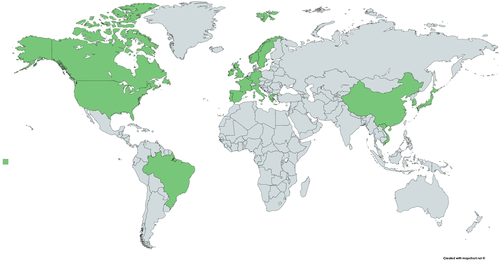IEEE NetSoft 2017 special issue: Softwarization sustaining a hyper‐connected world: En route to 5G
1 INTRODUCTION
The IEEE International Conference on Network Softwarization (IEEE NetSoft) was established in 2015. The first edition was held in London, UK, in April 2015, followed by the second edition in Seoul, Korea, in June 2016. The third edition was held in Bologna (Italy) from the 3rd to the 7th of July 2017. NetSoft was started as the flagship conference of the IEEE Software‐Defined Networks (SDN) initiative of the IEEE Future Directions Committee, which is now a cross‐Society IEEE worldwide program addressing the main techno‐economic aspects concerning SDN and NFV.
The theme of NetSoft 2017 was “Softwarization Sustaining a Hyper‐connected World: en route to 5G” emphasizing that software‐defined networks (SDN), network function virtualization (NFV), and cloud‐edge‐fog computing are key ingredients of an overall techno‐economic transformation trend, which is impacting deeply Telecom and ICT industries. This trend, often called “Softwarization,” will bring costs optimizations and new service paradigms. In particular, SDN, NFV, and network programmability are going to become the main enablers of the 5th Generation (5G) of communication infrastructures, which will span from high data rate fixed‐mobile services to the Internet of Things.
The NetSoft 2017 conference was co‐chaired by Dr. Antonio Manzalini from Telecom Italia and by Prof. Roberto Verdone from the University of Bologna, Italy. The Technical Program Committee was co‐chaired by Prof. Franco Callegati, from the University of Bologna, Alexander Clemm, from Huawei USA, and Koheii Shiomoto from the Tokyo City University, Japan, representing Europe, the Americas, and Asia. Besides the three co‐chairs, the Technical Program Committee included 103 experts coming from Universities and Research Centers, as well as from the Industry and Network Operators, representing 24 countries from the 5 continents.
Overall, 86 papers were submitted by authors from 27 countries, both from the industry and the academia. Once the review process was completed, the authors were allowed to submit a rebuttal, and the final selection was made at a TPC meeting, where every paper was carefully discussed and ranked based on its content, the reviews, and the submitted rebuttal. Overall, 42 papers were selected for presentation: 16 regular papers and 26 short papers, 49% of the submitted contributions with authors belonging to 18 different nations, as shown in Figure 1. The accepted 42 papers were organized into 5 plenary sessions and 6 parallel sessions. The session topics were well in line with the conference scope, addressing the role of SDN and NFV in the development of 5G, NFV Service Function Chaining solutions, SDN performance and engineering issues, SDN data plane design, and SDN security issues.

Publisher URL: https://onlinelibrary.wiley.com/doi/abs/10.1002/nem.2048
DOI: 10.1002/nem.2048
Keeping up-to-date with research can feel impossible, with papers being published faster than you'll ever be able to read them. That's where Researcher comes in: we're simplifying discovery and making important discussions happen. With over 19,000 sources, including peer-reviewed journals, preprints, blogs, universities, podcasts and Live events across 10 research areas, you'll never miss what's important to you. It's like social media, but better. Oh, and we should mention - it's free.
Researcher displays publicly available abstracts and doesn’t host any full article content. If the content is open access, we will direct clicks from the abstracts to the publisher website and display the PDF copy on our platform. Clicks to view the full text will be directed to the publisher website, where only users with subscriptions or access through their institution are able to view the full article.


